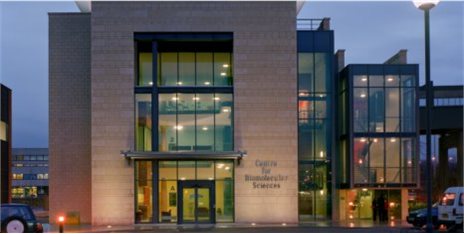Speaker: Matthew Greene (Centre for Biomedical Sciences, Prof. Soultanas Group, University of Nottingham)
Venue: C15 Lecture room, Pope Building, University of Nottingham.
Hot-Points:
- He has been observing the replicase activity and trying to probe helicase activity in Bacillus subtilis.
- There are a number of things his team can measure, such as, ssdna creation and dsdna depletion, etc.
- The assays he believes they can go for are listed below:
2) Bulk helicase assays: Eggleston et al., 1996
3) Internal W quenching.
- One of his team's collaborators in Bristol produced SSB probes: see Dillingham et al., 2008.
- For the construction of a B. subtilis probe they performed a mutagenesis G23C based on an exposed cysteine (C51), and then a fluorescence characterisation by titration and shift assays named above:
2) G23C C51V
3) Wild type SSB (wild type showed the lowest Kd)
Conclusions:
- Results show that E. coli and B. subtilis have different sizes in what concerns binding sites.
- Increasing the salt (NaCl) level shifts the level of cooperativity, as it is shown next
(NaCl)
HIGH ------------------------------------ LOW
negative cooperativity
- By increasing salt levels one reduces negative cooperativity
Hope you liked this second seminar posted on this brand new label. Next one is more linked to Immunology, so get your immunologist friends to visit The Toxicologist Today because there will be some dendritic cells visiting us soon! Veeeeeerrrrryyyyyyyy soon!


No comments:
Post a Comment